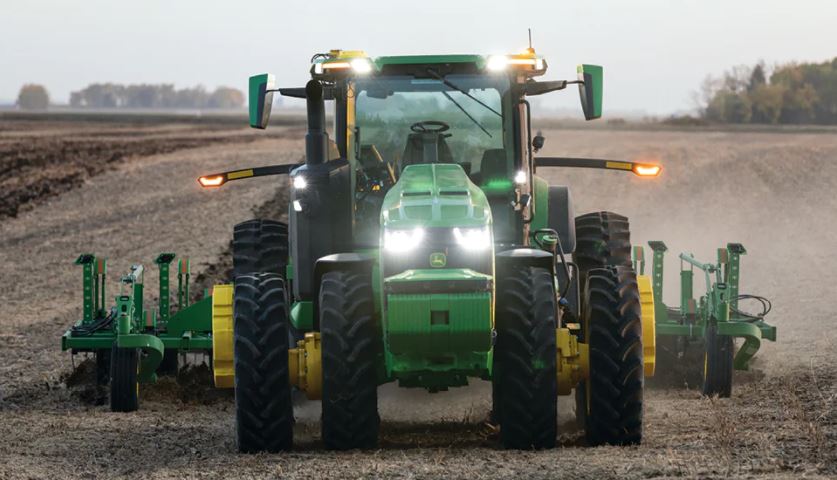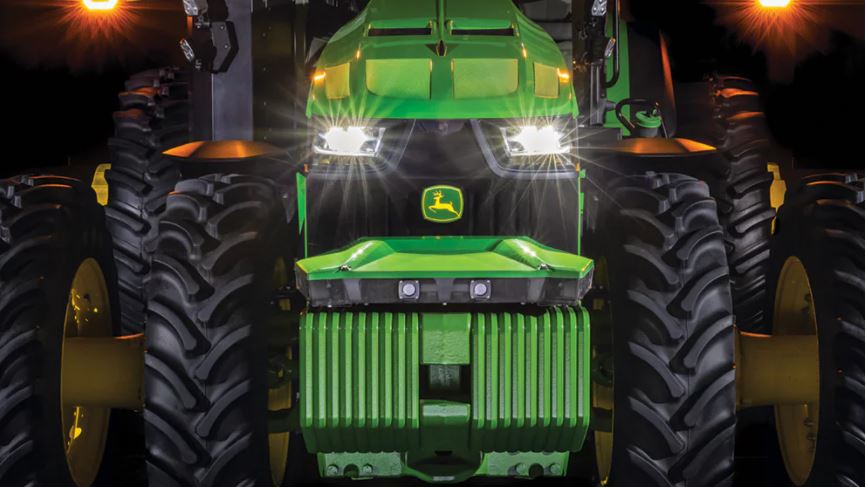Agriculture is an essential sector and will be for as long as humans need food. However, like many other manual, labor-intensive industries, it’s struggling with an ongoing worker shortage. Autonomous machinery can help.
Many agricultural workers are nearing retirement, with an average age of 59.4 among principal farm operators. Farmers under 35 represent just 9% of the workforce, leaving few people to fill the current generation’s shoes. As human workers become increasingly difficult to attract and retain, farms are turning to machines.
Here’s a look at some of the autonomous machinery helping farmers mitigate this labor shortage.
Driverless Tractors
Tractors are an essential piece of farm equipment, making them a natural candidate for automation. Automated versions of these machines work much like driverless cars but are more viable than self-driving vehicles on public roads. Relatively easy, repetitive routes and no other traffic make it easy to implement self-guiding technologies.
Earlier this year, John Deere unveiled a fully autonomous tractor line, set to release later in 2022. These tools use six cameras and machine vision to navigate, with real-time data sharing letting farmers monitor and control them remotely. In addition to navigating autonomously, robotic tractors can till, plant seeds, spray products and harvest without human intervention.

Other Autonomous Vehicles
Tractors are far from the only farm vehicles with autonomous upgrades today. Self-guided drones can fly over fields to analyze crop health or soil conditions, helping farmers make more informed decisions. Automated moving sprayers pass through the land and spray individual crops as needed, reducing labor while minimizing chemical use.
Other options take a less specialized, more versatile approach. Skid steers, which are compatible with a massive range of attachments, are an ideal use case for automation. Farmers can equip self-driving skid steers with various tool sets depending on the current situation, serving multiple needs with a single machine.
Highly specialized autonomous equipment is excellent for precision agriculture but not always an option for smaller farmers. Many farms operate on slim profit margins, making more versatile choices more appealing.
Harvesting Machines
Harvesting crops can be a delicate operation, making it unsuitable for automation for many years. Despite this challenge, recent advances have made this option entirely viable, helping streamline some of farms’ most inefficient processes. For example, automated combines can now use sensors to adjust rotor speeds, balancing speed with gentleness in real-time.
Robotic solutions can now help harvest even the most sensitive of produce. These machines use vacuum suction or cushioned, low-pressure grabbers to pluck fruits from trees and vines without bruising them. Some options also include sensors to detect which vegetables are ready for harvesting and which need more time.
Weeding Robots
Weeding is another historically slow process that autonomous machinery can now accelerate. Traditionally, it takes time because workers have to look through fields to find weeds, then manually pluck or poison them, being careful not to damage crops. This type of repetitive, sensitive work is ideal for automation, which can often accomplish it faster.
Today’s farm robots feature a broad range of different weeding technologies. Some use brushes and tools to suffocate or pull out weeds, while others apply specialized herbicides and others zap unwanted growth with lasers. Farmers can decide which option works best for their needs, and choices will only grow as the market matures.
The Future of Agriculture Is Automated
Agriculture has a reputation for being old-fashioned and heavily manual. Despite its deep historical roots and this reputation, farming today is becoming a cutting-edge, tech-driven industry. As demand rises and worker shortages persist, more farms will implement automation, leading to a robotic future.
Autonomous machines are relatively new to farming, but they’ve already seen remarkable growth. As adoption keeps rising, it may not be long before robots can handle virtually every task on the farm.
Jane is the founder and editor-in-chief of Environment.co where she covers topics in green technology, energy and environmental sustainability.









